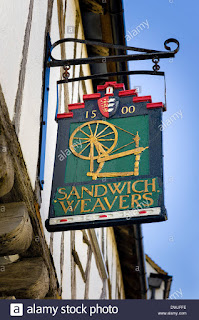England lacked skilled labor, specifically,
weavers. Across the English Channel, Flemish weavers had thriving international
businesses. King Edward III offered weavers “letters of protection” allowing
them to move to Colchester to set up their businesses as English enterprises. The
king hoped that his native laborers would learn state-of-the-art skills and
compete on the world stage.
In Bart
Lambert & Milan Pajic, Drapery in
Exile: Edward III, Colchester and the Flemings, 1351–1367, 99 Hist. 338
(Dec. 2014), the authors explain:
“Throughout the fourteenth century, Edward III issued several
letters of protection encouraging Flemish textile workers to establish their
trade in England. This article argues that, between 1351 and 1367, over 100
immigrants from the Low Countries settled in Colchester, twenty‐seven of whom
were Flemish textile manufacturers exiled from Flanders and welcomed by Edward
III in 1351. Attracted by excellent natural conditions for clothmaking, a
shortage of manpower following the Black Death and an open economic environment,
they made a vital contribution to the town’s development as an internationally
renowned centre of textile production that was able to withstand the pattern of
urban decay so prevalent in other parts of late medieval England.”
Today,
the U.S. “imports” 65,000 technology workers from abroad to make up for a
deficit of skilled labor. The H-1B visa is the mechanism to make this happen.
President Trump has issued an executive order called “Hire American.” It places
new restrictions on this visa. Just as European weavers helped support and grow
the weaving industry, H-1B visa workers, on the whole, add to the growth of the
U.S. technology sector.

No comments:
Post a Comment